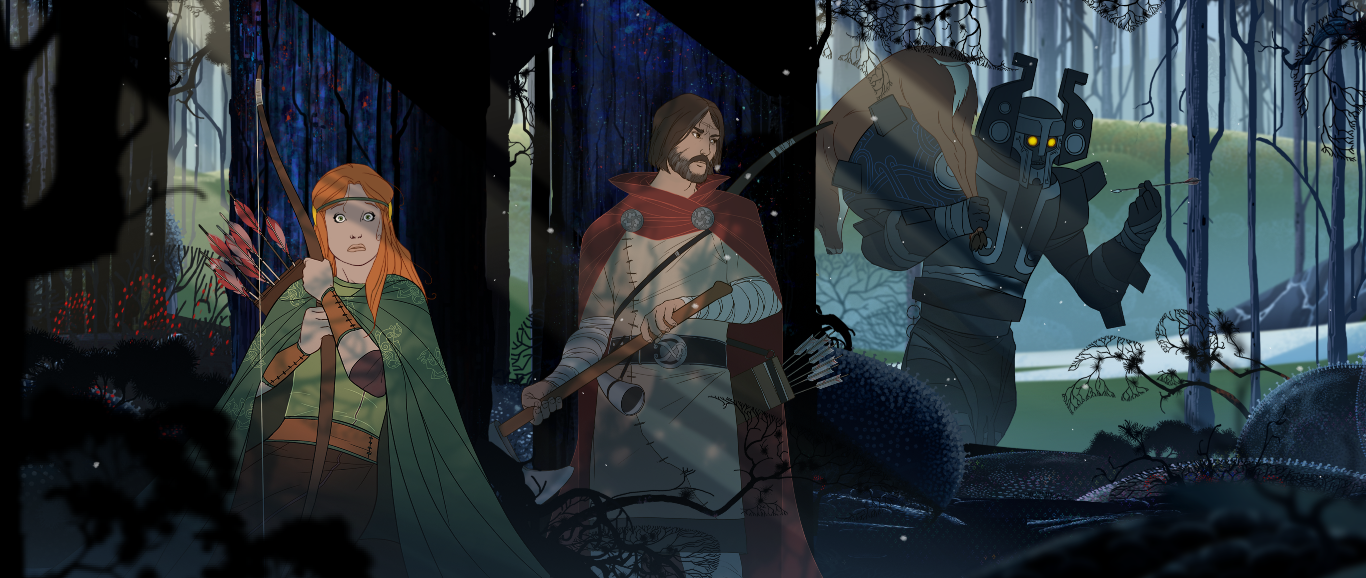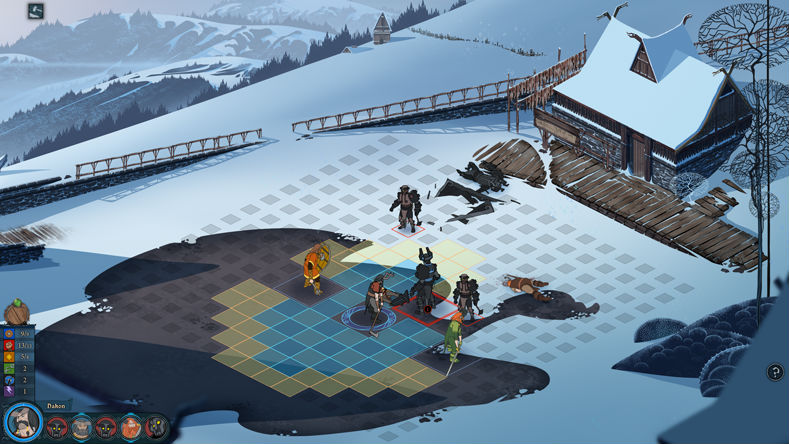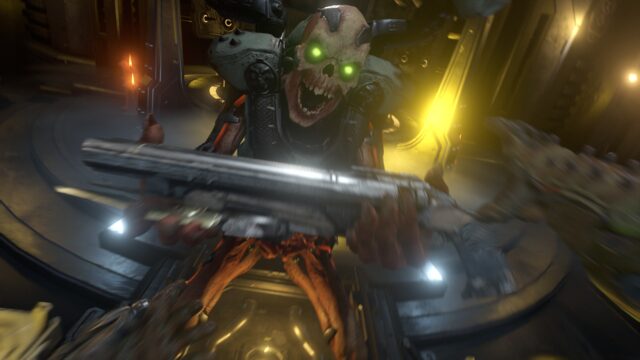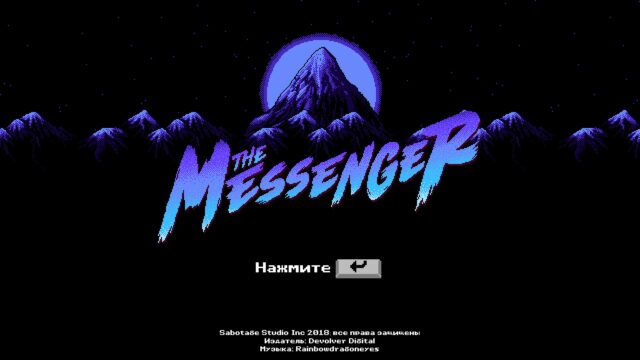The Banner Saga Review

The Banner Saga is a very tempting thing. Being an independent release from a small team of former Bioware employees, this game promised a magnificent story, a new universe, clever tactical battles, and charming visuals reminiscent of animated cartoons. The game made a lasting impression on me – I spent several consecutive days with it, carefully weighing all the pros and cons so as not to make a hasty final verdict, and it was not easy for me. And now, in order.
Somewhere in the middle of the Banner Saga campaign, one of the few characters who are willing to participate in the plot exposition asked the current leader of the group the following question: “How well do you know history?”
“We come from a small forest town,” he replied. And the journey from that town to the edge of the world (whether it be a place, an event, or even a pub) turns into a series of similar episodes. If the saga is embroidered on a banner several hundred meters long, most of the stitches will repeat the same scenes, narrating battles with monotonous enemies – up to migraines or, at least, an annoying itch in the temples.
In telling the story, the developers use four types of, so to speak, “interactive pictures” – perhaps even “canvases,” because the quality of the artwork is simply top-notch, as you may have already noticed from the trailers and screenshots – i.e., isometric battles, almost static dialogues, illustrations depicting resting places, and panoramic views of how your wards travel the world.
Almost any static moment in the game can be mistaken for a frame from a good cartoon – everything is skillfully and very detailedly drawn, and the design of characters and other creatures pleasantly deviates from the canons established in fantasy RPGs. Even if an Amazon’s belt is three times as elegant, it still cannot escape a barrage of sarcastic remarks, just like a braided gnome beard that will never escape the mire of clichés.

And here there is none of that. Besides ordinary people, the world is inhabited by varls and dredge. The first are horned long-living giants, and the second are called “others”. While varls and humans lived separately and somehow maintained peace, the dredge, an inexplicable race of stone-like humanoids with armor instead of skin, nails, nostrils, and hair, suddenly attacked their lands. “Dredge” (in the English version – Dredge, which can be translated as “the worst part of ore”) is probably the most unsuccessful word when playing “20 questions”. How can you guess it? What should be the guiding question? “Maybe they are some kind of inorganoids?” – I suppose, like that. Anyway, details about their nature gradually unfold during the campaign – through the narration of someone’s memories or stories about historical events.
The strongest aspect of Banner Saga is the gradual immersion into its mythology. I admire how the game trusts me to piece together all the narrative fragments myself – the game throws you into an unknown world and then shows the situation from different sides. However, switching between the two groups of protagonists seemed a bit uncomfortable to me, but not because of confusion, but because of the change in pace.

The trust in the game, which was established in the first few hours, did not let me down. Over time, the narrative found the perfect balance between the past of individual families from the refugee caravan and mythological tales of cosmic proportions. The saga begins with words about the sun being frozen in the sky and the gods having long died, although the memory of them still lives in human hearts. Their influence is not yet forgotten, and monuments embodying divine power are scattered throughout the world.
The immersion into the new world is extremely captivating, but the journey turns into an exhausting trial long before the end. Following the tradition of tactical RPGs, the player is led from one battle to another, alternating turn-based combat and dialogue scenes. The game also has management aspects – while the caravan crosses the map, decisions can be made that affect morale, the amount of provisions, relationships between characters, and the number of survivors. I call them survivors because this is not the kind of game where you lead your army into battle – it is a game where you preserve what you have left.
The caravan consists of refugees, and each new settlement it reaches will confront you with a dilemma. Some will not want to let you in when you need to replenish food supplies, while others will want to leave the devastated lands and join you, thereby increasing the consumption of provisions. Managing desperate and dying people is not easy. The Banner Saga shows us both heroism and monstrous cruelty, but I was more drawn to its less prominent moments.

Now let’s talk about the combat system. It’s not bad, and in some places, it successfully develops the standard ideas of turn-based slaughter. The first few hours turn into an exciting journey along the learning curve. But when the curve straightens out, the game doesn’t offer you the opportunity to delve into the depths of mechanics and does without unpredictable twists and turns. Instead, The Banner Saga transitions into a too comfortable rhythm.
I admit that if you play in long sessions like I do, the second half will more likely tire you than delight you, but even if I played in short bursts, the lack of variety would have filled my cup of patience. Four types – travel, rest, dialogue, and battle – alternate with minor changes. During the caravan’s movement, we see beautiful snow, forests, and mountains that you won’t find in National Geographic, but they are just intermediate scenes. They are delightful, but they only serve as fillers between battles and management.
As for the dialogues, they are well-written, and several voices will immerse you in the narrative throughout. The game world is excellently crafted, the environment, characters, and mythology are done at such a high level that I wouldn’t discourage anyone from embarking on this fading splendor. It’s just that this particular journey turns into a burdensome routine.

The world map is scattered with descriptions of various places, compact but detailed. Each settlement looks unique; every forest, mountain, or coastline is capable of attracting the attention of a traveler. However, once you remove the colorful texts and references in the dialogues, the differences between locations disappear. Sometimes, during stops, special active areas for plot development appear on the screen, but more often than not, there is only a hero management screen, a market, and a training battle arena. Like a touring musician, the player quickly discovers that all cities are indistinguishable from each other when you only see the stage and the hotel room.
Battles are pretty much the same. The uniformity of the battlefields and enemy types implies that the winning tactics are learned once and for all. Something changes with the appearance of enhanced variations of known enemies, but the tactical system simply lacks the space to fully unfold. The interesting division between armor and health, and willpower as a reward and currency in battle, promise more possibilities than the game actually provides. Presumably, the strengths of the system are better revealed in multiplayer.
In any battle in The Banner Saga, the main thing is to keep an eye on the balance between health and armor and choose positions wisely. Dredge disperse, receiving serious damage, so the main tactic at any difficulty level, except for easy (which can be changed during the game), is to group them together. The initial damage should be dealt to the armor, not the health, because a high armor value hinders the quick reduction of the latter. However, gradual reduction of health reduces the damage that enemies can inflict, and in some cases, it is useful to slightly change your unbeatable tactic.

Such cases are very rare and they occur in the midst of battles, essentially boss battles. In most cases, a simple exchange of long-range attacks, maneuvering for a favorable position, and a series of powerful strikes help. Aim at the right enemy at the right time and you won’t have to strain your brain too much.
Preparation for battle is more important here than the battle itself, although the set of skills and items is quite limited. One common currency (glory) is spent on leveling up, acquiring new equipment (a simple bonus to characteristics), and purchasing provisions. The higher the character’s level, the more expensive it is to further develop them, which pushes you towards creating a group of average fighters. On medium and hard difficulty, the characteristics of wounded fighters decrease for several days, so it is vital to prepare backup fighters, alternating their participation in battles, which adds tactical depth. The main thing is to avoid relying on low-level rookies during a crucial battle simply because everyone else is injured and the glory needed for development has been spent on food and equipment.
Among the decisions that the player can make, there are many that seem insignificant and not really important. There was a moment when I was leading a group of a hundred or more people across the frozen bed of a dried-up lake, and we had no food or honey with us. Every day someone would die, and morale was at zero. And in the end, it didn’t affect anything, we crossed to the other side and simply continued our journey.

Sometimes there are large-scale battles where the total number of your squad is taken into account compared to the enemy’s. Heroes can engage in a battle that will be a regular turn-based fight to tip the scales in their favor. In case of victory, you can even arrange a second battle to further protect your soldiers. Long before the end of the game, I stopped engaging in battles and suffered losses just to avoid monotonous (or too easy) fights.
Despite all the criticisms, I am glad that at least half of the game time in The Banner Saga left me with warm memories. It’s a pity that instead of a serious drama in a fading world, we are offered only tedious movement from one point to another. Playing on hard difficulty seemed too exhausting for me, but I recommend choosing normal instead of easy – it may be challenging at times, but victories will bring some satisfaction unlike an easy walk.

How beautiful this creation is after all. And its true beauty sometimes manifests itself in inconspicuous things.
The journey of the heroes of Jackson’s Lord of the Rings is captured in a series of widescreen panoramas. Videos of the actors and their doubles crossing grand landscapes not only benefited the New Zealand tourism industry but also became an embodiment of the days and kilometers traveled, demonstrating the perseverance and endurance of the Fellowship and, subsequently, its divided parts. And although they were all dwarves (and hobbits and dwarves are dwarf-dwarves) compared to the surrounding peaks, these panoramas served as a reminder of their commitment and the strength needed to uphold it.
Stoic presents us with heroic views in a similar manner, only with a crowd of ragamuffins united under a banner that carries their lineage, history, and an entire culture. Broken carts creak and thump. This image is one of vulnerability and a different kind of strength, and in this regard, The Banner Saga is as good as it is in its grid-based numbers. It’s just a pity that in this case, the world itself turned out to be more attractive than the clumsy game set in its scenery.
Share
Discuss
More Reviews





